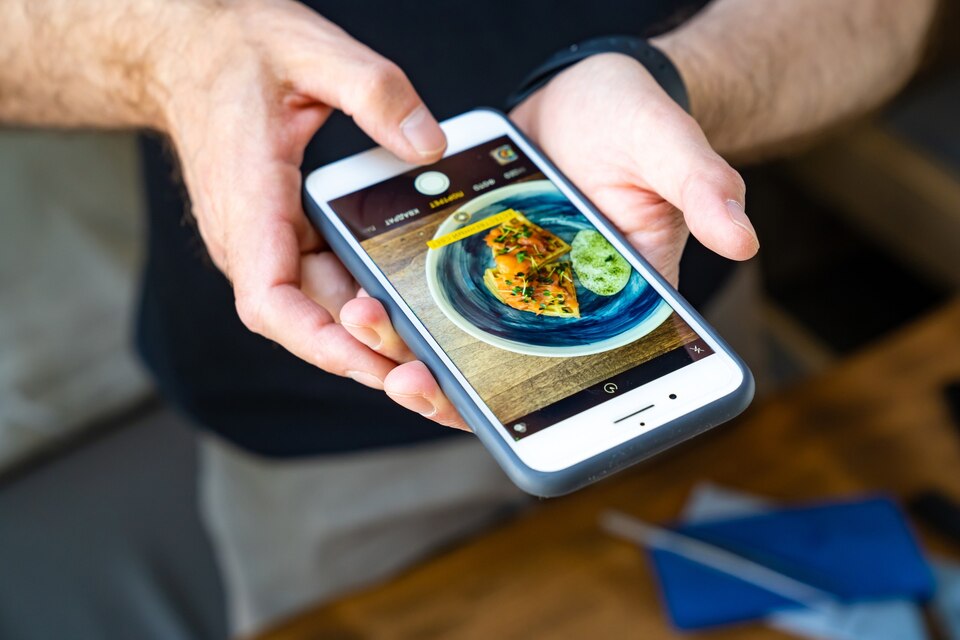Introduction
The food delivery app business has grown at an unprecedented rate in recent years, owing to shifting customer preferences and technological improvements. The convenience of ordering food online has become a need for many people, and as demand for food delivery services grows, competition among food delivery applications heats up. Maximizing income and increasing customer retention are important for these apps’ long-term viability. This article examines numerous techniques that food delivery apps might use to attain these objectives, including insights into market trends, consumer behavior, and technology advancements.
Understanding the Food Delivery Market
Market Growth and Trends
The food delivery sector has risen at an exponential rate, and estimates indicate that it will continue to expand in the future years. Several factors contribute to this expansion, including hectic lives, urbanization, the rise of digital payment systems, and an increased reliance on mobile devices. Furthermore, the COVID-19 pandemic has expedited the growth of food delivery services, as consumers seek safe and convenient alternatives to dining out. Key market trends include the growing popularity of healthy meal options, the use of AI for personalized experiences, and the growth of delivery services into suburban and rural areas.
Major Players and Competitors
UberEats, DoorDash, Grubhub, and Postmates are among the leading participants in the food delivery industry. Each of these enterprises has carved out a niche by offering distinct value propositions such as speed, variety, exclusive restaurant partnerships, and cutting-edge technology. Uber Eats, for example, benefits from a large driver network, whereas DoorDash focusses on partnerships with both national and local eateries. Understanding the competitive landscape is critical for identifying areas for differentiation and expansion.
Consumer Behavior and Preferences
When it comes to food delivery services, consumers are increasingly searching for convenience, variety, and good value. They choose apps that provide a smooth user experience, fast delivery, and high-quality food. Ease of navigation, payment options, and customer service are all important considerations in consumer decision-making. Loyalty is frequently motivated by persistent great experiences and personalized offerings, making it critical for food delivery apps to develop and satisfy changing client expectations.
Maximizing Revenue
Optimizing Pricing Strategies
Dynamic Pricing: Adopting a dynamic pricing model allows apps to adjust prices based on demand, time of day, and other factors, maximizing revenue without alienating customers. For example, prices might be higher during peak hours or lower during off-peak times to encourage more orders.
Discounts and Promotions: Regular discounts and promotions can attract new customers and encourage repeat purchases. Seasonal bargains, referral discounts, and limited-time offers are all great ways to increase sales and consumer engagement.
Subscription Models: Implementing subscription services, such as monthly delivery passes, can provide consistent revenue and increase consumer loyalty. Customers that subscribe benefit from reduced or waived delivery rates, which increases their likelihood of using the service on a regular basis.
Expanding Delivery Areas
Geographic Expansion: Implementing subscription services, such as monthly delivery passes, can provide consistent revenue and increase consumer loyalty. Customers that subscribe benefit from reduced or waived delivery rates, which increases their likelihood of using the service on a regular basis.
Partnering with Local Restaurants: Partnering with local restaurants allows you to broaden your products and reach a larger audience. Customers value having access to their favorite local eateries, so these collaborations can strengthen community links and brand loyalty.
Diversifying Service Offerings
Meal Kits: Offering meal kits can attract clients who want to cook at home but prefer the convenience of pre-portioned goods and recipes. This service is suitable for health-conscious individuals as well as those interested in trying various cuisines.
Grocery Delivery: Expanding services to include grocery delivery allows you to meet a broader range of consumer needs while increasing order frequency. By collaborating with grocery retailers, apps may offer a one-stop shop for both meals and daily necessities.
Alcohol Delivery: Including alcohol delivery in the service might increase average order values and attract a new customer base. This option could be very popular for gatherings, parties, or informal at-home meals.
Leveraging Technology
AI and Machine Learning: AI and machine learning can improve personalized recommendations, boost customer satisfaction, and raise purchase value. These technologies can use customer data to suggest meals, restaurants, and promotions based on individual tastes.
Real-Time Tracking: Providing real-time tracking and updates ensures transparency and enhances the customer experience, leading to higher retention rates. Customers appreciate knowing the status of their orders and estimated delivery times.
Efficient Route Planning: Implementing advanced route planning algorithms can cut delivery times and operational costs while increasing overall efficiency and customer satisfaction. Efficient routing ensures timely deliveries while also reducing fuel usage, which contributes to sustainability initiatives.
Boosting Customer Retention
Enhancing User Experience
User-Friendly App Design: A clean, intuitive design with simple navigation and an efficient ordering procedure is essential for client retention. Search filters, remembered preferences, and rapid reorder choices improve user convenience.
Easy Navigation: Simplifying the browsing and checkout procedures can minimize friction and increase repeat usage. A pleasant experience requires consumers to be able to easily find their favorite restaurants, track orders, and make payments without difficulty.
Loyalty Programs
Rewards and Points Systems: Implementing reward and point systems can encourage repeat purchases and foster long-term loyalty. Customers can accumulate points for each order, which can be redeemed for discounts, free shipping, or other benefits.
Exclusive Offers: Making exclusive offerings to loyal consumers can make them feel cherished and encourage continuous interaction. These deals could include early access to new restaurants, special discounts, or bonus points.
Personalized Marketing
Targeted Email Campaigns: Personalized email campaigns based on user preferences and order history can increase engagement and encourage repeat purchases. Emails might include personalized promos, new restaurant recommendations, and reminders about favorite meals.
Push Notifications: Customers can stay engaged and informed by receiving timely push alerts about specials, new services, or order updates. To ensure a great user experience, notifications should be useful but not unduly obtrusive.
Quality Control
Food Quality and Safety: Maintaining good standards for food quality and safety is critical. Partnering with renowned restaurants and adhering to strict sanitary regulations is critical for providing a dependable service that customers can trust.
Timely Deliveries: Consistently satisfying delivery time expectations can have a substantial impact on customer satisfaction and retention. Efficient logistics, reliable tracking, and proactive communication are essential for ensuring timely delivery.
Customer Feedback and Support
Collecting Feedback: Consistently satisfying delivery time expectations can have a substantial impact on customer satisfaction and retention. Efficient logistics, reliable tracking, and proactive communication are essential for ensuring timely delivery.
24/7 Customer Support: Round-the-clock customer service guarantees that issues are resolved quickly, creating confidence and loyalty. A timely support team can handle issues promptly and create a great experience even when they emerge.
Challenges and Solutions
Operational Challenges
Managing a big fleet of drivers, making timely deliveries, and preserving food quality are all significant problems. Implementing effective logistics management systems and strong quality control techniques can help to mitigate these challenges, assuring a seamless operation.
Competition Management
With so many participants in the industry, differentiating through unique value propositions and outstanding customer service is critical. Regular market analysis and adaptation to user tastes can provide a competitive advantage, allowing apps to stay ahead of the pack.
Regulatory Issues
Navigating regulatory requirements, such as health and safety guidelines and delivery rules, is critical. Maintaining compliance and being proactive in responding to regulatory changes can help to avoid operational disruptions and create consumer trust.
Future Trends in Food Delivery
Technological Advancements
The merger of artificial intelligence, machine learning, and blockchain technology is poised to transform the food delivery industry. These technologies can enhance personalisation, increase transparency, and streamline operations, resulting in a more efficient and gratifying client experience.
Evolving Consumer Expectations
As consumers demand more convenience and variety, food delivery apps must constantly develop to match these expectations. Offering different menus, shorter delivery times, and improved user experiences will be critical to remaining competitive.
Sustainability and Eco-Friendly Practices
Adopting sustainable practices, such as eco-friendly packaging and energy-efficient transportation systems, will become more crucial. Consumers are becoming increasingly environmentally sensitive, and connecting with these principles can boost brand loyalty and attract a rising base of eco-conscious customers.
Conclusion
The profitability of food delivery applications depends on maximizing revenue and improving client retention. These apps can see tremendous growth by optimizing pricing methods, increasing delivery areas, diversifying service offerings, and utilizing technology. Improving user experience, creating loyalty programs, personalized marketing, and maintaining high-quality standards are all critical for customer retention. In this competitive business, ongoing innovation and adaptation to market changes will assure long-term success. Partnering with the best food delivery app development company can further enhance these efforts, providing cutting-edge solutions and expertise to stay ahead of the competition.
FAQs
How can food delivery apps improve customer retention?
Food delivery apps can help with client retention by improving the user experience, introducing loyalty programs, giving personalized marketing, ensuring high-quality food and punctual deliveries, and providing good customer service. By focussing on these areas, applications can foster long-term client relationships and stimulate repeat purchases.
What are the most effective revenue-boosting strategies for food delivery apps?
Effective revenue-boosting techniques include optimizing pricing using dynamic models and promotions, increasing delivery areas, diversifying service offerings like meal packages and grocery delivery, and using technology for personalized suggestions and efficient operations. These tactics can help you boost order frequency, attract new clients, and maximize overall revenue.
How important is technology in the food delivery industry?
Technology is critical in the food delivery industry because it improves personalisation, operational efficiency, real-time tracking, and offers important insights into consumer behavior. Advanced technologies such as artificial intelligence and machine learning play an important role in generating growth and consumer happiness. By combining these technologies, food delivery apps can remain competitive and satisfy their customers’ changing wants.









